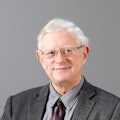Mae ein hymchwil ym maes mathemateg gymhwysol a chyfrifiadurol yn cael ei lywio gan broblemau sy’n ymwneud â gwyddorau ffisegol, gwyddorau biolegol a pheirianneg, ac mae lawer o bartneriaethau rhyngddisgyblaethol cynhyrchiol ym Mhrifysgol Caerdydd a thu hwnt.
Ymhlith y cydweithwyr rhyngddisgyblaethol ym Mhrifysgol Caerdydd y mae cydweithwyr yn y Biowyddorau, y Gwyddorau Daear ac Amgylcheddol, a Pheirianneg.
Ymhlith ein cydweithwyr cenedlaethol a rhyngwladol y mae grwpiau ymchwil yn Barcelona, Rhydychen, Caergrawnt, MIT, Manceinion, Caeredin, Cyprus, Duke, Dinas Mecsico
Gellir defnyddio ein hymchwil wrth ganfod tswnamis yn gynnar, cludo dŵr dwfn, llifoedd gronynnog megis afalansiau malurion, tirlithriadau tanfor a phrosesu powdr fferyllol, biomecaneg, gwyddor deunyddiau, peirianneg prosesau, signalau calsiwm ym maes ffrwythloni ac embryogenesis, targedu magnetig at ddibenion biolegol a heriau eraill ym maes biohylifau, morffogenesis, symudiad cellog, deinameg stochastig, niwrofioleg, oncoleg.
Mae'r grŵp yn cynnal Grŵp Ymchwil Myfyrwyr Prifysgol Caerdydd sy’n rhan o'r Gymdeithas er Mathemateg Ddiwydiannol a Chymhwysol a’r Sefydliad Mathemateg a'i Gymwysiadau (Grŵp Ymchwil Myfyrwyr SIAM-IMA), sy'n cynnwys myfyrwyr ôl-raddedig ac aelodau cyfadrannol o bob rhan o'r Brifysgol sydd â diddordeb mewn mathemateg neu gyfrifiadura gwyddonol a'u cymwysiadau yn y byd go iawn.
Ymchwil
Prif feysydd ymchwil y grŵp presennol yw:
Mecaneg hylifol ddamcaniaethol a chymhwysol
Llifoedd arwynebau rhydd, deinameg caenau a jetiau hylifol, theori sefydlogrwydd hydrodynamig, mecanweithiau pontio laminaidd-tyrfol, ansefydlogrwydd haenau ffiniau a llifoedd olion, tonnau disgyrchiant acwstig, llifoedd glud-elastig, deinameg swigod, modelu cyfansoddol o hylifau polymerig, llifoedd gronynnog, modelu llifoedd geoffisegol, atal Anfrownaidd.
Mathemateg a mecaneg solidau
Elastigedd aflinol, glud-elastigedd aflinol, problemau cyswllt, dadansoddi cyflyrau terfyn, modelu cyfansoddol ym maes gwyddor deunyddiau, theori cyfyngu ar straen o ran ymateb deunyddiau.
Bioleg fathemategol
Datblygu dulliau mathemategol, cyfrifiadurol ac ystadegol i fynd i'r afael â phroblemau biolegol a meddygol
Dadansoddi cymhwysol
Problemau gwrthdro wrth fodelu deunyddiau, homogeneiddio a mecaneg cyfansoddion. Calcwlws amrywiadau.
Dadansoddi rhifiadol a chyfrifiadura gwyddonol
Datblygu, dadansoddi a gweithredu algorithmau ar gyfer datrys hafaliadau differol, ynghyd â thechnegau cyfrifiadurol uwch ar gyfer modelu ac efelychu i’w defnyddio mewn cyd-destunau amrywiol.
Rydym yn awyddus i oruchwylio myfyrwyr yn y meysydd hyn. I roi blas mwy penodol o’n gwaith hyd yma, ymhlith yr enghreifftiau diweddar o bynciau PhD a oruchwyliwyd gan ein grŵp y mae:
- Dadansoddiad straeniau cyfyngedig stochastig o solidau hyperelastig anhomogenaidd
- Nodweddu daeargrynfeydd tanddwr drwy ddadansoddi ymbelydredd acwstig
- Modelu a dadansoddi stochastig yn achos solidau hyperelastig homogenaidd
- Dadbondio ac ymestyn strwythurau cellog biogenig
- Sefydlogrwydd llinol ac ymddygiad dros dro hylifau glud-elastig mewn haenau terfyn
- Dulliau elfennau sbectrol effeithlon ar gyfer hafaliadau differol rhannol
- Deinameg defnynnau ar arwynebau heterogenaidd
- Modelu damcaniaethol a chyfrifiannol yn achos hylifau glud-elastig cywasgadwy ac anisothermol
Cwrdd â'r tîm

Professor John Pryce
Professor / Sêr Cymru Research Chair in Neurobiology
Digwyddiadau
Seminarau
Ewch i'n calendr digwyddiadau i weld pa gyflwyniadau ar y gweill gennym.
Digwyddiadau yn y gorffennol
Seminarau Mathemateg Gymhwysol a Chyfrifiadurol 2018-19
Seminarau Mathemateg Gymhwysol a Chyfrifiadurol 2017-18
Camau nesaf
Ymchwil sy’n gwneud gwahaniaeth
Mae ein hymchwil yn gwneud gwahaniaeth i fywydau pobl wrth i ni gweithio ar draws disgyblaethau er mwyn ymgodymu â phrif heriau sy’n wynebu’r gymdeithas, yr economi ac ein hamgylchedd.
Ymchwil ôl-raddedig
Mae ein graddau ymchwil yn rhoi'r rhyddid i chi i archwilio pwnc arbennig mewn dyfnder ymhlith ymchwilwyr blaenllaw.
Ein heffaith ymchwil
Mae'r astudiaethau achos hyn yn rhoi sylw i rai o'r meysydd lle rydym yn cael effaith ymchwil gadarnhaol.











